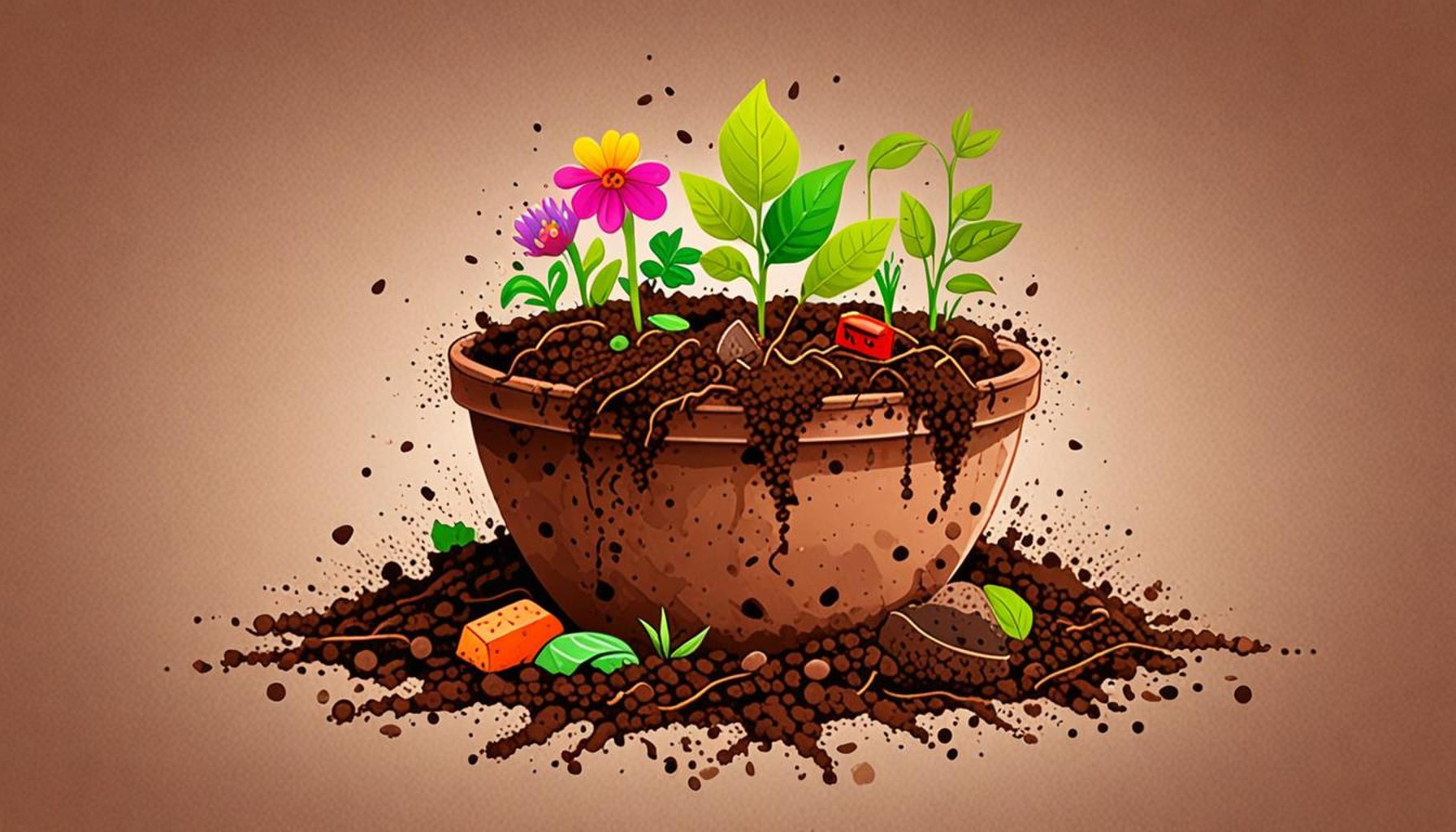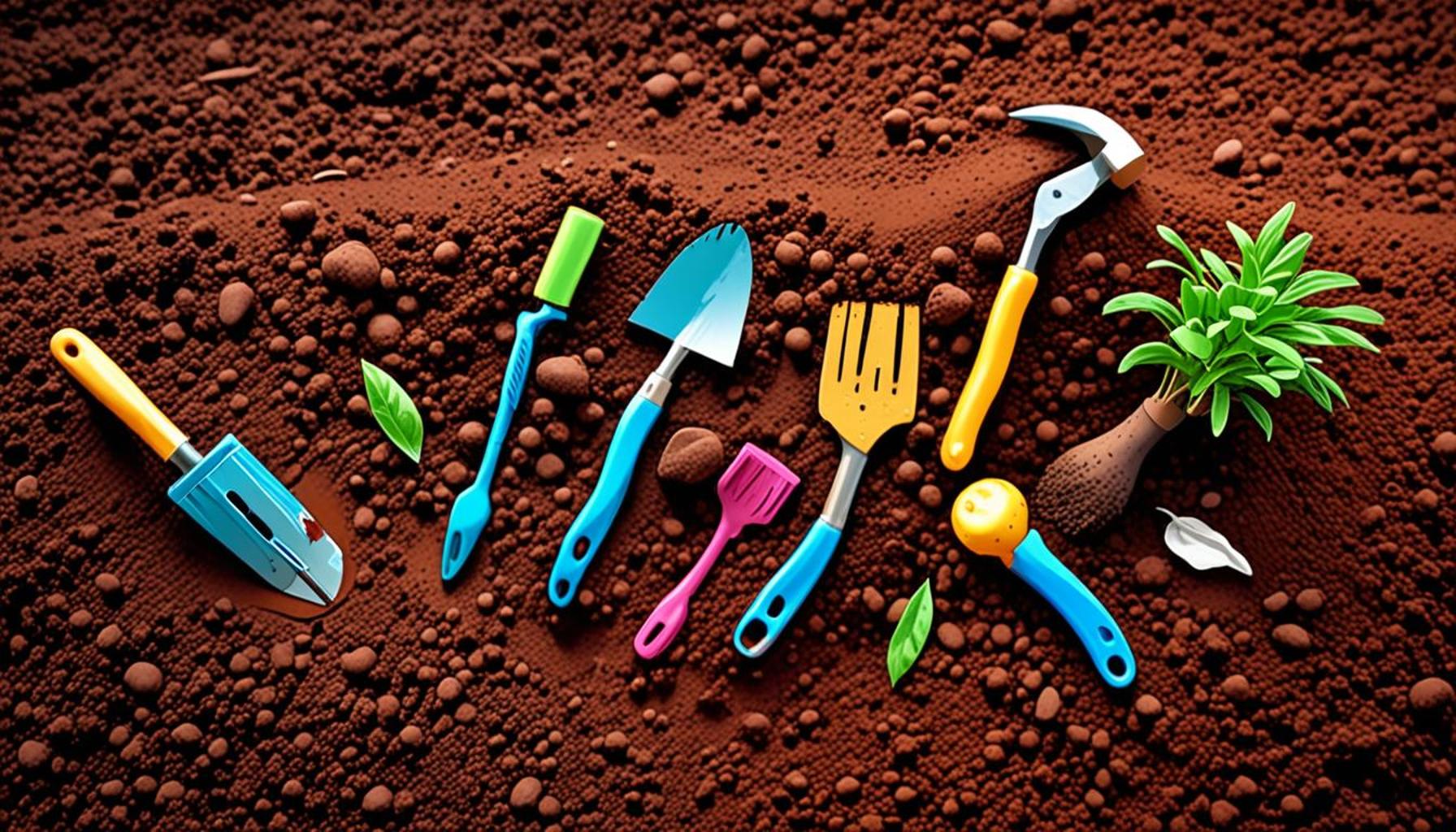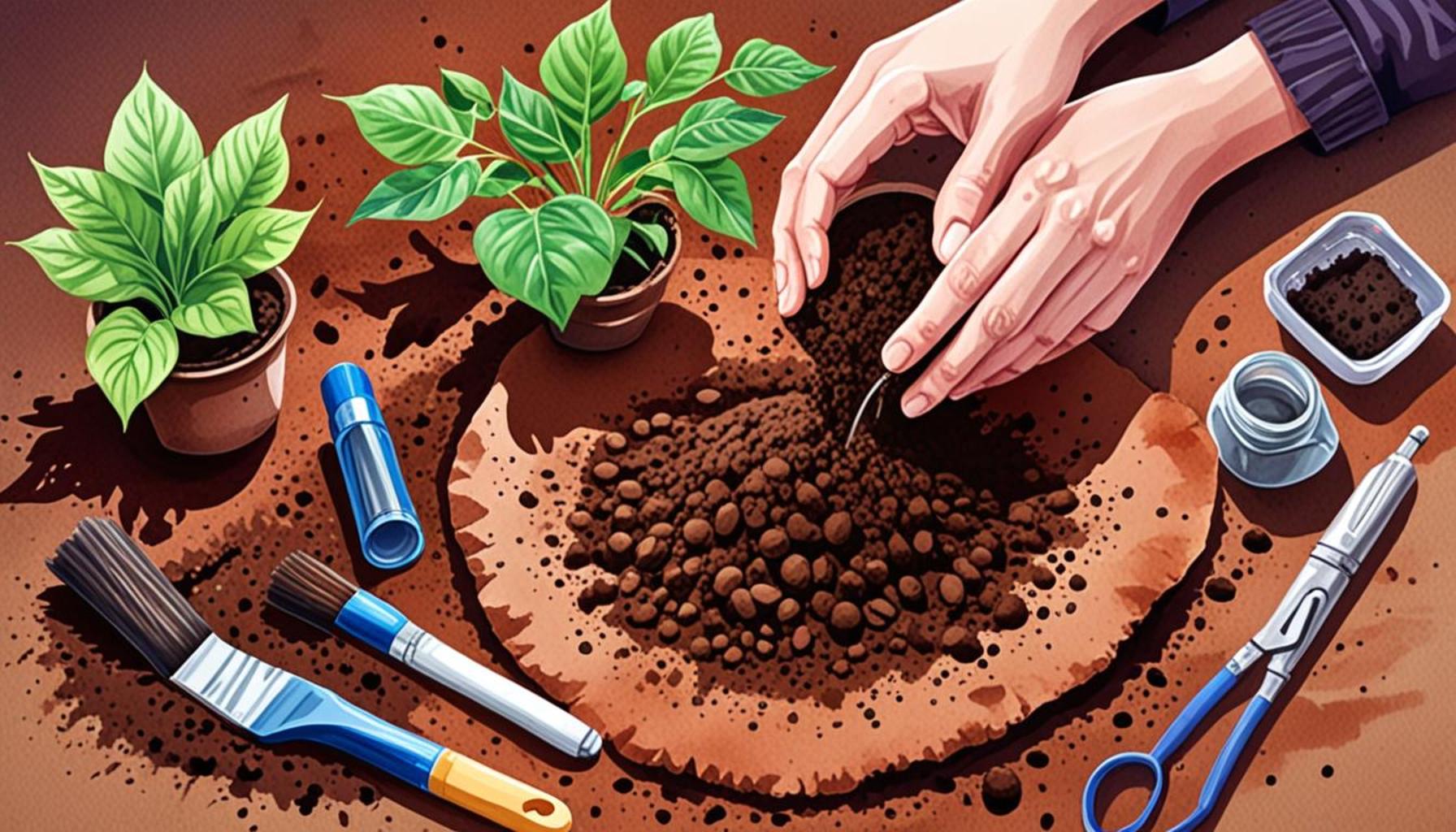Tips for Creating a Sustainable and Eco-Friendly Soil at Home

Discovering the Secrets of Eco-Friendly Soil
Creating a healthy, sustainable garden starts from the ground up. Soil health plays a crucial role in the overall success of gardening, affecting everything from plant growth to ecosystem balance. Understanding the complexity of soil ecosystems reveals how crucial they are to environmental stability and biodiversity. Healthy soil is alive, teeming with microorganisms that break down organic matter, and supports an array of organisms from earthworms to tiny insects, all playing their part in nutrient cycling.
To achieve a thriving and sustainable garden, consider the following eco-friendly practices:
- Composting: Transforming kitchen scraps and yard waste into nutrient-rich compost is one of the most effective ways to improve soil health. Material such as vegetable peelings, coffee grounds, and dried leaves can be layered to create compost. Over time, microorganisms break down these materials into dark, crumbly soil known as ‘black gold,’ which can drastically enhance soil structure and provide essential nutrients to plants.
- Crop rotation: Changing the types of plants grown in each area from season to season can significantly enhance soil fertility. For instance, legumes such as beans and peas fix nitrogen in the soil, making it more fertile for subsequent crops. This practice also helps prevent pest infestations and reduces the risk of soil depletion, ensuring a diverse and resilient garden ecosystem.
- Cover crops: Utilizing plants like clover or rye to protect and enrich the soil during off-seasons is highly beneficial. These plants cover the soil, preventing erosion, suppressing weeds, and fostering moisture retention. Once tilled into the soil, they also serve as green manure, providing additional organic material, which can boost soil fertility and structure.
Implementing these methods not only contributes to environmental sustainability but also maximizes the quality of your home-grown food. Healthy soil can improve water retention significantly, allowing plants to thrive with less frequent watering. In regions like California, where drought conditions are prevalent, investing in soil health with eco-friendly practices can lead to reduced reliance on chemical fertilizers and synthetic additives.
In the following sections, you will uncover practical strategies to enrich your soil naturally. For example, you might explore the role of mycorrhizal fungi in soil health, which help plants uptake nutrients more efficiently. Each tip is designed for easy application, ensuring you can start making a positive impact at home today. As you delve deeper into soil health, you’ll find that every step toward enriching your garden contributes not just to your plants’ vitality but also to the overall health of our planet.
DIVE DEEPER: Click here to enhance your gardening skills
Essential Practices for Enriching Home Soil
Building a sustainable and eco-friendly soil at home starts with understanding the different methods available to nurture and enhance its health. Implementing practices that integrate natural processes not only supports plant growth but also fosters a resilient ecosystem in your garden. Here are some fundamental methods to create a flourishing environment right beneath your feet:
- Mulching: Applying a layer of organic materials like straw, grass clippings, or shredded leaves to the surface of your soil can provide numerous benefits. Mulch helps retain moisture, suppresses weeds, and adds organic material as it decomposes. In fact, studies show that gardens mulched with organic materials require up to 50% less watering, making this practice both water-efficient and beneficial for soil health.
- Natural Fertilizers: While chemical fertilizers can enhance plant growth, they often degrade soil health in the long run. Instead, consider using natural fertilizers such as bone meal, fish emulsion, or manure from organically raised animals. These alternatives release nutrients slowly into the soil, aligning with the natural nutrient cycling processes. Over time, they contribute to robust soil ecosystems that support diverse plant life.
- Soil Testing: One of the simplest yet most effective ways to improve soil quality is through regular soil testing. This process identifies nutrient deficiencies and pH levels, allowing gardeners to tailor their amendments accordingly. Many local agricultural extensions or universities offer soil testing services, which can provide valuable insights and recommendations for creating the ideal growing conditions for your plants.
- Earthworm Cultivation: Well-known for their positive impact on soil health, earthworms enhance soil structure, aeration, and fertility. These unsung heroes consume organic matter and produce nutrient-rich casts that greatly benefit plant growth. Creating a welcoming environment for earthworms, such as maintaining moist soil and adding organic matter, can significantly improve the vitality of your garden.
By adopting these eco-friendly practices, you not only contribute to the health of your garden but also promote a sustainable approach to gardening that benefits the environment. For example, utilizing mulching can dramatically reduce the frequency of watering needed, which is particularly crucial in regions facing water scarcity. Through thoughtful engagement with these methods, every gardener can play a role in combating climate change and enhancing biodiversity.
Next, we will delve into more advanced techniques that can further elevate your soil health. Understanding the relationships between soil microorganisms and plant health paves the way for creating an even more resilient garden ecosystem. Exciting discoveries await as you embark on this journey of soil enhancement!
Tips for Creating a Sustainable and Eco-Friendly Soil at Home
To cultivate a sustainable and eco-friendly garden, it’s essential to begin with the soil you nurture. The very foundation of your garden—soil—is not just a medium for plant growth; it is a living ecosystem. By focusing on organic methods and integrating various sustainable practices, you can build a robust soil profile that enhances not only plant health but also environmental well-being. Here are some effective tips for creating sustainable soil right in your backyard:
| Category | Benefits |
|---|---|
| Composting | Enhances soil fertility and structure while reducing landfill waste. |
| Mulching | Retains moisture, suppresses weeds, and adds organic matter as it decomposes. |
| Crop Rotation | Prevents soil depletion and reduces pest and disease cycles. |
| Cover Crops | Improves soil health and helps prevent erosion during off-seasons. |
Implementing these methods isn’t just beneficial for the plants; it’s a step towards a healthier planet. By nurturing your soil with organic materials and sustainable practices, you foster biodiversity and contribute to a greener future. Moreover, you’ll notice the quality of your produce improves, giving both environmental and health benefits. Embracing these eco-friendly tips will ultimately reward your efforts with a resilient garden, brimming with life.
Ready to take the plunge? With a little dedication and the right techniques, you can transform your garden’s soil into a sustainable environment that promotes growth and ecological health.
DISCOVER MORE: Click here to learn about enhancing soil health
Advanced Techniques for Soil Health Enhancement
Once you’ve incorporated basic practices to enrich your home soil, it’s time to elevate your gardening game with advanced techniques. These methods focus on understanding and leveraging the complexities of soil biology, which can dramatically improve the sustainability and eco-friendliness of your soil over time. Here are some exceptional strategies you might consider:
- Composting: Composting is a cornerstone of sustainable gardening, transforming kitchen scraps and yard waste into nutrient-dense organic matter. By creating your own compost pile or bin, you can recycle organic material while dramatically enriching your soil. Moreover, composting can significantly reduce the amount of waste sent to landfills. The finished product—a balance of nitrogen-rich greens and carbon-rich browns—can be applied directly to the soil surface or mixed in to provide essential nutrients and enhance structure.
- Cover Crops: The use of cover crops acts as a living mulch and serves multiple purposes. Planting species like clover, vetch, or rye during off-seasons can prevent soil erosion, improve soil fertility, and even suppress weeds. Cover crops not only cover the soil but also enhance soil organic matter when incorporated back into the ground. These crops fix atmospheric nitrogen, replenishing nutrients and supporting microbial activity, an essential component of a healthy garden ecosystem.
- Crop Rotation: Implementing a crop rotation plan is crucial for breaking pest and disease cycles, as well as improving soil nutrient profiles. By alternating the families of crops planted in a specific area from season to season, you can prevent soil depletion and encourage a diverse soil microbiome. For example, rotating legumes with heavy feeders like tomatoes not only supports varying nutrient demands but also improves overall soil resilience.
- Biochar Application: Biochar is a form of charcoal produced from organic matter through pyrolysis. Its addition to soil can increase retention of nutrients and moisture while providing an excellent habitat for beneficial soil organisms. Research indicates that biochar can enhance soil fertility and carbon sequestration, making it a promising tool for environmentally conscious gardeners. When used appropriately, biochar can minimize the need for synthetic fertilizers and enhance soil structure.
- Mycorrhizal Fungi Inoculation: These beneficial fungi form symbiotic relationships with plant roots, assisting in nutrient absorption and enhancing plant health. By inoculating your soil with mycorrhizal fungi, you can boost its nutrient-holding capacity and increase drought resistance. This sustainable method is particularly valuable in maintaining healthy gardens with minimal external inputs, contributing to a self-sustaining soil system.
Integrating these advanced techniques into your gardening routine not only supports the health of your plants but also strengthens the overall ecosystem. For instance, by employing cover crops and composting, you create a symbiotic cycle that continually nourishes the soil. Moreover, techniques like crop rotation and mycorrhizal fungi inoculation further bolster soil health while promoting biodiversity within the garden, crucial for resilient ecosystems.
As you delve into these advanced soil health strategies, remember that patience and observation are key. Over time, you’ll notice how these practices contribute to creating a more sustainable and eco-friendly soil at home—truly making your garden flourish.
DISCOVER MORE: Click here for essential tips on choosing indoor plants
Conclusion
Creating sustainable and eco-friendly soil at home is not just an essential practice for gardeners; it is a significant step toward promoting environmental health and enhancing biodiversity. By integrating simple practices like composting and the use of cover crops, along with more advanced techniques such as crop rotation and biochar application, gardeners can significantly improve soil health while reducing waste and reliance on synthetic fertilizers. Each of these strategies fosters a vibrant ecosystem beneath the surface, supporting plants and microorganisms essential to maintaining soil fertility.
Furthermore, adopting a mindful approach to gardening encourages a deeper connection to the land and a greater appreciation for the natural processes that sustain our environment. As you embark on this journey of soil stewardship, bear in mind that patience and continuous learning are vital. The impact of your efforts may not be immediately visible, but over time, as soil fertility improves and biodiversity increases, you will witness a flourishing garden that contributes positively to the planet.
In conclusion, the journey toward creating sustainable and eco-friendly soil is profoundly rewarding, offering an opportunity to cultivate not only your garden but also a more resilient and healthy Earth. Start small, be observant, and allow nature to guide your path as you enrich your home soil for generations to come.


